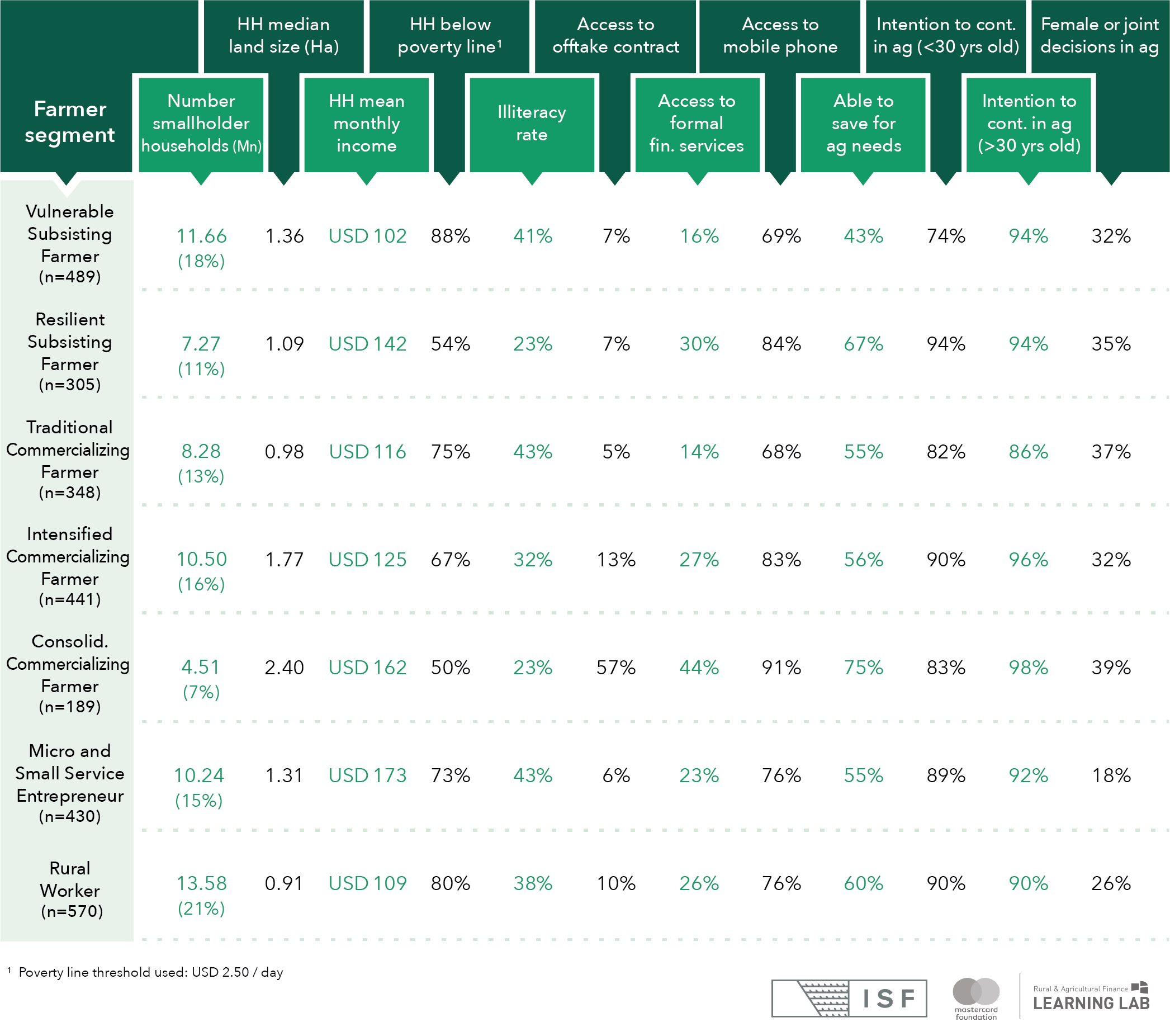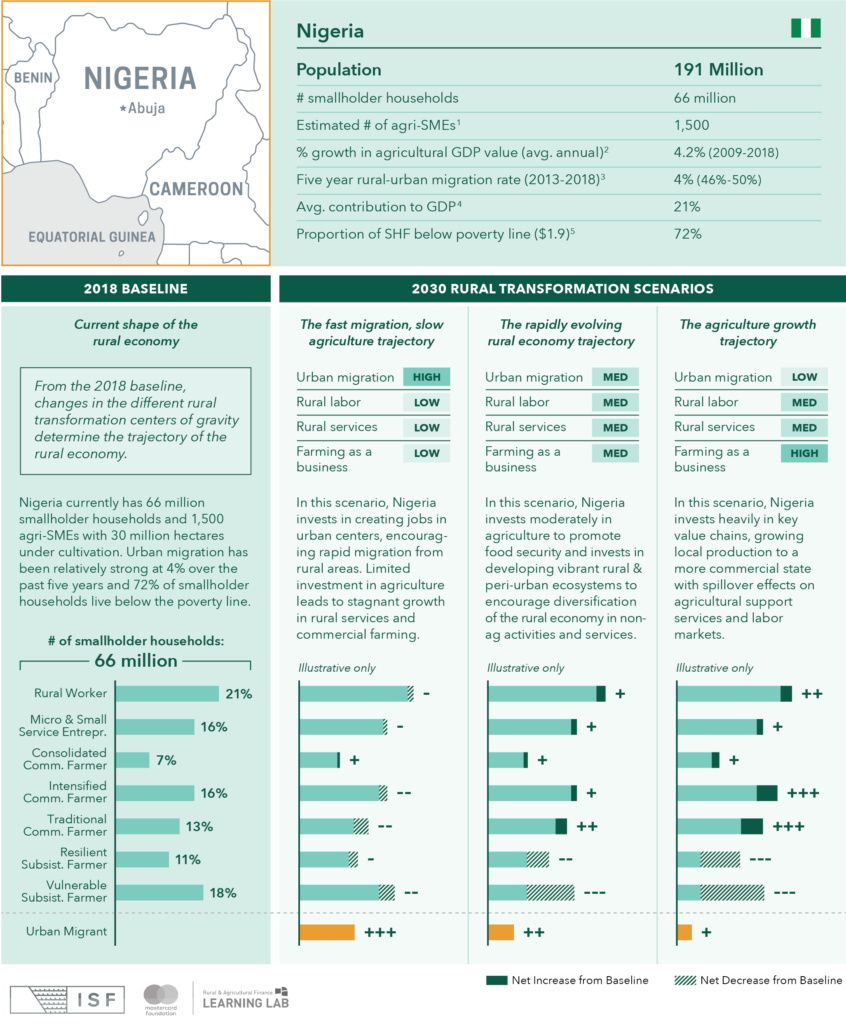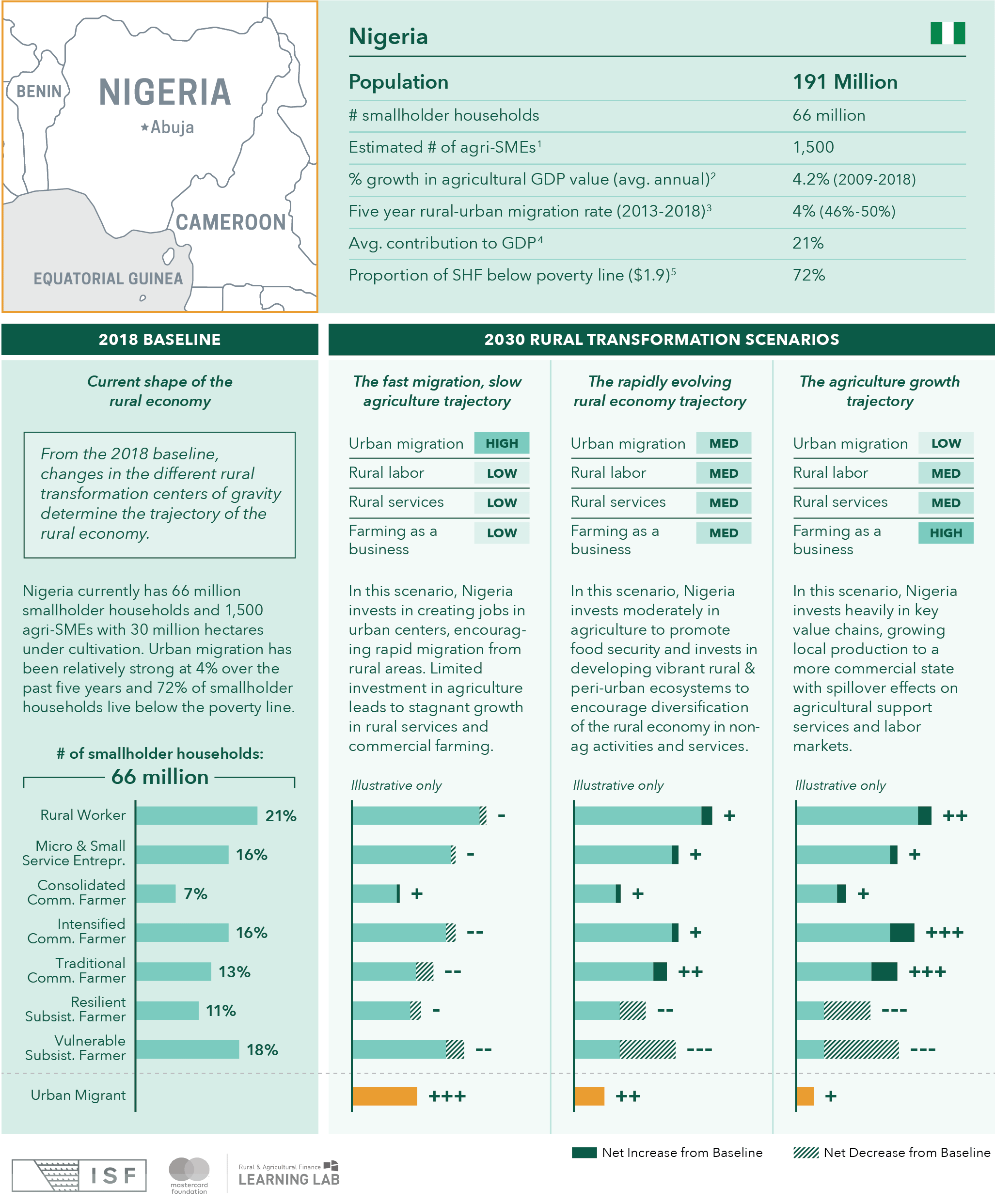As rural areas develop and countries experience increased industrialization and urbanization, the impacts on rural economies can be dramatic. By 2050, the UN projects that 68% of the world’s population will live in urban areas (compared to 54% in 2016). In fact, by 2050, there will be very few countries where the proportion of population living in rural areas will exceed that in urban areas.
The rural pathways model can be a powerful tool for considering the current shape of a given rural economy and informing tough decisions about where and how to invest in rural transformation. For the first time, data available through nationally representative surveys have allowed us to create a sophisticated, dynamic, and segmented view of the rural economy. The figure below shows the estimated number and profile of rural households in each of the sub-segments of the rural pathways model — representing an intricate baseline view of the shape of the rural economy.





